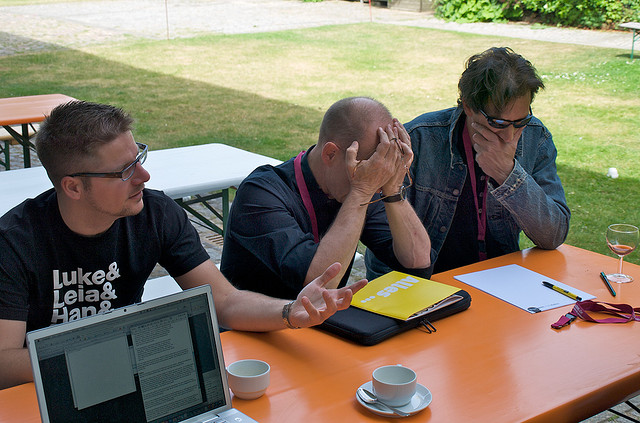Every startup needs access to capital, whether for funding product development, for initial rollout efforts, acquiring inventory, or paying that first employee. Most entrepreneurs think first of bank loans as the primary source of money, only to find out that banks are really the least likely benefactors for startups. Thus “creative” really means maximizing non-bank financing.
While sizing up the alternatives, I couldn’t help but pick up a recent book by Karlene Sinclair-Robinson with the creative title of “Spank the Bank: The Guide to Alternative Business Financing.” She plumbs the range of possibilities she has gained through personal experience as an entrepreneur, and as the “queen of business financing” in the financial industry.
The alternatives are many, but they are not easy. The most successful entrepreneurs are the ones who think creatively, not only about their offering, but also about how to acquire cash, and never say never. They have to sell themselves, more than their product, to close on every alternative source of funding. Here are ten top sources from Karlene, and my own experience:
- Personal financing. You may not think this is very creative, but I’m amazed at the number of “wannabe” entrepreneurs who haven’t thought about saving any money before they start, or wouldn’t think of using their own savings to start a business. No investor I know will put money into a deal if they see that you have no “skin in the game.”
- Personal credit lines. You qualify for a secured personal credit line based on your personal credit efforts. Credit cards can usually be acquired with even less history. We all know startups that have been built on one or both of these. The advantage is that you retain total ownership and control, as long as you make minimum payments.
- Family and friends. These are people who should believe in you, without waiting to see if your idea works, or waiting until you have real customers, revenue, and hard assets. These commitments should always be positioned in writing as promissory notes, or so-called bridge-loans, which convert to equity at a rate determined by later investors.
- Peer-to-peer lending. This is a process whereby a group of people comes together to lend money to each other. It’s been around many years, in examples like small business groups or ethnic groups supporting similar efforts. In the startup context, look for a successful entrepreneur peer willing to fund similar new ideas.
- Crowdfunding. Here you use the power of the Internet to find a crowd of like-minded people, with small amounts each, to back your efforts. This approach is now spreading beyond non-profits, pre-sales, and memento rewards, to soon include the ability to make small equity investments via the JOBS Act passed a couple of years ago.
- Micro-loans. There are many private companies and non-profits that offer small loans, up to $35,000, to promote entrepreneurship, to individuals who would not normally quality for bank financing. Examples include Patriot Express loans, and Small Office/Home Office (SOHO) loans.
- Vendor financing. If you need tangible products for inventory, many manufacturers and distributors can be convinced to defer your payment until the goods are sold by you. This really means an extension of the normal 30-day payment terms to a period of months or longer, depending on your credit worthiness and extra fees.
- Purchase order financing. The most common scaling problem faced by startups is the inability to accept a large new order, since they don’t have the cash to build and deliver the product. PO financing companies will often advance the required funds directly to the supplier, allowing the transaction to complete and profit to flow to the startup.
- Factoring accounts receivables. This is similar in concept to PO financing, but applies the advance to unpaid amounts not yet due or collected from customers. In high volume startups starting to scale up, this will provide cash on your sales immediately, rather than waiting for 30 to 60 days or longer for payment.
- IRA financing. Investment Retirement Account funds and 401(k)s are arguably the single most accessible alternative funding source available today for startups. You can’t use your own self-directed funds for your startup, but many others are willing and able to loan you money from theirs, for the right terms, if they believe in you and your cause.
Note that we haven’t yet mentioned the more conventional and less creative finance approaches of Angel and venture capital investors. For new entrepreneurs, these sources usually have very little interest in early-stage or seed financing, preferring the lesser risk of a proven business model, with real revenue and customers, ready to scale. Yet creative thinking wins here also.
Karlene’s book provides details on the how and why of all these forms of alternative financing for startups, and many more. Managing cash flow is just one of the many ways that entrepreneurs have to think creatively to innovate, beat the competition, and survive. If you figure out how to spank the bank, you can surely spank your competitors. The payback there is even better.
Image Credit: CC by Stephen Coles




